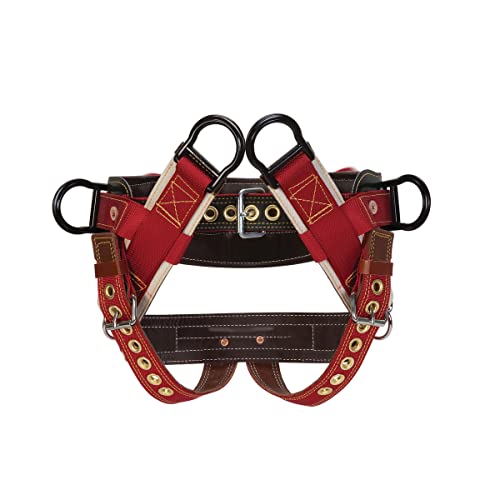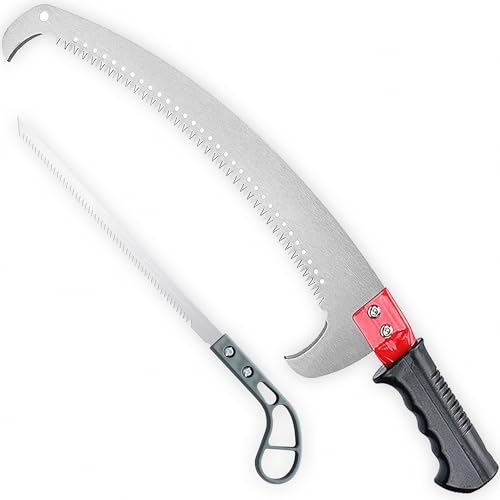Mmmmmmm; Wow Miss Ginger (the movie star not proffesor or mary ann) from Strawberry Hill .....
i'm a lil guy and look at taking out one of the species of gi-ants of our world, like martial arts, kinda using size and leverage against something larger than you, so that u usher its superior size and strength to beat itself. So you choose your targets to experience.
Like, taking a knotch to the felling direction out, is like taking the chock out from under a tire, so force can flow smoothly and not build up. For a 40' lever with 1000# of head weight (tree)can put 20 tons of force that builds up (without speed factored in)and can have deadly levels of force exploding for disastourous results possible (splitting, barberchairing), happening right were you stand by tree with power saw! No-No bad! So by notching and taking that 'chock' out of the way, you are allowing the tree to fall, not tempting it not too, or pitting it against itself, by giving it this relief of that knotch.
The lines of this notch must meet precisely, not cross to be safest. For if they don't, you have a knotch within a knotch, so the inner knotch will command, and it is equivalent to just making a slash on the front of the tree (kerf cut) which can also be dangerous. So make it right, so it can werk right.
the knotch's mouth spread dictates the amount of travel before the 2 faces of the knotch are pitted against each other with all present force, so having this so early with a kerf or inner knotch is very dangerous. Cutting the knotch almost to the center, leaves the machine of the hinge operating through the widest strip of wood in the center, maximizing its potential as it faces its awesome job of moving all the weight and leverage to the ground safely.
Then, leave wood for a hinge as you backcut through to knotch, this is essential for safety and control of speed and direction, 2 very important factors. Once the hinge is detatched, u have no control over speed or direction. If you werk this way, the knotch will direct that the fall will be on its axis, so don't walk in front or behind the knotches face. Keep your backcut level, and higher than bottom face in conventional "L" knotch (2" recomended).
To get the tree to fall in the direction of choice, you have to power it into that face of the knotch. If it is leaning that way, (both the tree and the ballance of the heads weight) gravity will do the werk for you. If not you must adjust and usher the tree into that face by pulling at high leverage into the face, lifting with wedge from rear so that the front tips into the facecut, or adjsuting holding wood of hinge for some leans of the head's weight.
All this is raw machinery, so you walk away from questionable wood and roots, that could fail as you need them. i don't knotch in deteriated wood, 'cat faced' (disturbed/marbled grain), where limbs were etc. You always think of loose wood falling on you and where a brain bucket. You make sure way is clear for tree to fall,a nd head not brush/hang on anything on the way down, impeding the flow of force and calling on it rear its ugly side as it fights itself.
These as the others are jsut a few things of a facsinating and hazardous science. Of course there are all the safety items of chainsaw handling, personally i don't touch anything without a working chain brake. May i suggest practi-call experience with someone and checking out Dent's "Pro Timber Falling-a Proceduarl Approach" for more; it has long been a cheaper, standard book i think than some others over time, and its reviews go like:
"If the people involved in the manufacturing of logs would follow the procedures and techniques explained in this book, there would not only be less accidents, we would also utilize more wood from each harvest area. Once the Faller and Bucker lay the saw to a tree, it is like Humpty Dumpty, all the Foresters in the Northwest can't put it back together again, and theirein lies the need to do it right the first and only time around."
Crown Zellerbach
This book has been used for many years to train firewood cutters, loggers and personnel of various federal organizations (U.S. Forest Service, Bureau of Land Management, Bonneville Power Administration, Western Area Power Administration, National Park Service, U.S. Department of Labor (OSHA) and numerous state departments of forestry. Professional Timber Falling is the most comprehensive text of its kind available. It covers the full range of topics from bars and chains to the physical forces affecting the tree. An in-depth analysis of such topics as, the holding wood, backcut, undercut, stump shot, side boring, notching, jacking are thoroughly discussed and vividly illustrated. Quite simply, Professional Timber Falling teaches all chain saw users how to make it home safely every night through the use of safe, efficient and proper work practices."
Some of this is tough superman werk, but some a lil'MF'er with a saw can look at and form a strategy to. It rawly is so mechanical in its essence, so i have to talk that way even to a 'girl'. So i guess a lady can use these martial arts confidentally and walk out in the field and adjust things to allow them to happen to her liking without worrying about brute force if she is smart.
Kinda like a way,
in other,
Martial Settings;
She definitely can win!
Just be smart and don't let the big
guy fall on ya,
when ya trip'em up!
It is all exactly the same,
but diffrent!























































